Set Object Is Not Subscriptable
Introduction:
Python offers a wide variety of data structures that allow programmers to efficiently manage and manipulate data. One such data structure is a set object, which serves as an unordered collection of unique elements. However, when attempting to access elements from a set using the subscript notation, an error message that reads “set object is not subscriptable” may arise. In this article, we will delve into the reasons behind this error, explore alternative methods for accessing set elements, and provide tips and examples for effectively working with set objects.
Definition of “set object is not subscriptable”:
In Python, the term “subscriptable” refers to an object’s capability to be indexed using the subscript notation (e.g., obj[index]). The error message “set object is not subscriptable” indicates that a set object, being an instance of the built-in set class, does not support subscripting. As a result, attempting to access elements of a set using the conventional indexing method will trigger this error.
Explanation of subscriptable objects and their behavior:
Subscriptable objects in Python include data structures such as lists, tuples, and strings. These objects can be accessed using numerical indices, where the index provides the position of an element within the object. For example, a list object in Python can be accessed using the subscript notation, as exemplified by myList[0] to access the first element.
Introducing set objects and their properties:
Sets in Python are collections of unique elements, characterized by their unordered nature and the absence of duplicate values. Set objects are defined using curly braces ({}) or the set() constructor, and can hold elements of various data types, including numbers, strings, and tuples. Unlike subscriptable objects, sets do not possess positional indices for accessing elements, making them incompatible with subscripting operations.
Why set objects are not subscriptable:
The primary reason why set objects are not subscriptable is their underlying data structure. Sets in Python are implemented as hash tables, which efficiently store unique elements and provide fast membership testing. However, hash tables do not preserve the order of inserted elements. Consequently, the absence of explicit indices renders set objects ineligible for direct subscripting.
How to access elements from a set object:
Although set objects cannot be accessed using indices, Python provides alternative methods to extract elements from them. One such method is the use of a for loop, which iterates over each element in the set without requiring an index. For instance, consider the following code snippet that prints each element of a set:
mySet = {1, 2, 3, 4}
for element in mySet:
print(element)
Another way to access elements from a set is by converting it into a list. Python provides a built-in function called list() that allows us to convert a set into a list. By doing so, we can then use indexing to access specific elements. However, it is crucial to note that the resulting list will not retain the original order of the set.
Examples and tips for working with set objects:
1. Object is not subscriptable:
To avoid the “set object is not subscriptable” error when attempting to access elements of a set, remember to use methods like for loops or conversion to a list, as discussed above. These alternatives provide effective ways to work with set objects without violating their non-subscriptable nature.
2. Set to list Python:
If you need to access specific elements of a set in a particular order, consider converting it into a list. For example:
mySet = {1, 2, 3}
myList = list(mySet)
print(myList[0]) # Accessing the first element
Please note that this approach sacrifices the inherent uniqueness property of sets, as duplicate values may be present in the resulting list.
3. TypeError: ‘property’ object is not subscriptable:
In Python, the “TypeError: ‘property’ object is not subscriptable” error can occur when attempting to access a non-subscriptable attribute of an object. This error is unrelated to sets and occurs when a property or non-subscriptable attribute is mistakenly accessed as if it were an indexable object.
4. Convert set to dictionary Python:
In scenarios where a specific key-value mapping is required, sets can be converted into dictionaries using the built-in dict() function. The set elements act as the keys while assigning a common value to each key. However, it is crucial to note that dictionaries are inherently unordered, and the resulting dictionary may not preserve the order of the original set.
FAQs:
Q1: Can you access a specific element of a set using an index?
No, set objects do not support subscripting, so you cannot access elements using indices. Use alternative methods such as for loops or converting the set to a list.
Q2: How can I check if a set is present within another set?
To check the presence of one set within another, you can use the “in” and “issubset()” methods. The “in” keyword returns a boolean value indicating whether the set is a member or not, while the “issubset()” method checks if the set is a subset of another set.
Q3: How do I find the length of a set in Python?
To find the length of a set, use the built-in len() function. For example: len(mySet)
Conclusion:
The “set object is not subscriptable” error often confuses Python programmers attempting to access elements from a set using conventional indexing. However, by understanding the inherent properties of set objects and alternative methods, such as for loops and conversion to lists, programmers can effectively work with sets and accomplish their intended tasks. Remember to avoid attempting to subscript sets, opt for alternative approaches instead, and leverage the power of set operations to efficiently manipulate unique data in Python.
How To Fix Object Is Not Subscriptable In Python
What Does Set Object Is Not Subscriptable Mean?
In Python, if you encounter the error “set object is not subscriptable,” it typically indicates that you are trying to access an element within a set using indexing or slicing, which is not allowed. This error is often encountered by beginners who are not familiar with the nature of sets in Python. To fully grasp this concept, it is important to understand what sets are and how they differ from other data structures in Python.
Understanding Sets in Python
A set is an unordered collection of unique elements. This means that unlike lists or tuples, sets do not preserve the order of elements, and they do not allow duplicates. In Python, sets are implemented as built-in data types, and they are defined using curly brackets {} or the set() function.
Here’s an example of a set definition:
“`
my_set = {1, 2, 3, 4, 5}
“`
In this case, `my_set` is a set containing the values 1, 2, 3, 4, and 5. Notice that the elements are separated by commas and enclosed within curly brackets.
Accessing Elements in a Set
While sets provide a way to store and manipulate elements, they do not support indexing or slicing like lists or tuples. In other words, you cannot access a specific element in a set using its position or range. This is where the error “set object is not subscriptable” comes into play.
For example, if you try to access the second element of `my_set` by using indexing, as in `my_set[1]`, you will encounter this error. Similarly, if you attempt to access a range of elements using slicing, such as `my_set[1:3]`, the same error will occur.
Why Sets don’t Support Subscripting
The reason sets don’t support subscripting is due to their fundamental properties. Sets are implemented using hash tables, which are unordered collections based on hash values. The element’s hash value determines its position within the set, which means sets are not indexed.
Additionally, sets are designed to store unique elements. When adding an element to a set, the set checks whether an element already exists using its hash value. If the element is already present, it will not be added again. As a result, the index-based approach used in lists or tuples is not applicable to sets.
Frequently Asked Questions (FAQs)
Q: Can I convert a set into a list to access its elements using indexing?
A: Yes, you can convert a set into a list using the `list()` function, allowing you to access its elements using indexing. For example:
“`
my_set = {1, 2, 3, 4, 5}
my_list = list(my_set)
print(my_list[1]) # Output: 2
“`
Q: How can I iterate over the elements of a set?
A: Sets support iteration using loops such as `for` loops. Since sets are unordered, the order of iteration cannot be guaranteed. Here’s an example:
“`
my_set = {1, 2, 3, 4, 5}
for element in my_set:
print(element)
“`
Q: How do I check if an element exists in a set?
A: You can use the `in` operator to check if an element exists in a set. It returns a boolean value indicating the presence of the element. For example:
“`
my_set = {1, 2, 3, 4, 5}
print(3 in my_set) # Output: True
“`
Q: Can I modify individual elements in a set?
A: No, you cannot modify individual elements in a set. Sets are designed to be immutable, meaning their elements cannot be changed once they are added. If you need to modify a set, you will have to create a new set with the desired changes.
Q: Do sets maintain the order of elements?
A: No, sets do not maintain the order of elements. The order of elements in a set is arbitrary, and it can change each time the set is accessed.
Q: How do I remove elements from a set?
A: You can remove elements from a set using the `remove()` or `discard()` methods. The `remove()` method raises an error if the element does not exist, while `discard()` does not raise an error. Here’s an example:
“`
my_set = {1, 2, 3, 4, 5}
my_set.remove(3)
print(my_set) # Output: {1, 2, 4, 5}
“`
In conclusion, the error “set object is not subscriptable” appears when trying to access specific elements in a set using indexing or slicing. Sets do not support these operations due to their unordered nature and the absence of duplicates. Understanding the properties and limitations of sets will help you avoid encountering this error and make the most out of this unique data structure in Python.
Does Python Set Support Item Assignment?
Python is a powerful programming language that offers a wide range of data structures to store and manipulate data efficiently. One such data structure is a set, which is an unordered collection of unique elements. Sets have the advantage of fast membership testing and can be used in various scenarios where uniqueness and order are not important. However, one question that often arises is whether Python sets support item assignment.
To clarify, item assignment refers to the ability to modify or update an element in a data structure. In Python, item assignment is supported by some data structures, such as lists and dictionaries. Lists allow you to modify individual elements by assigning a new value to a specific index, while dictionaries enable you to update values associated with specific keys. But what about sets?
The short answer is no, sets in Python do not support item assignment. This means you cannot update or modify individual elements in a set using item assignment syntax. The reason behind this limitation lies in the nature and purpose of sets.
Sets are designed to store unique elements and perform efficient membership testing. To achieve this efficiency, sets use a hashing algorithm that determines the position of an element within the set. This hashing algorithm requires elements to be immutable, meaning they cannot be changed once added to the set. If sets allowed item assignment, the hashing algorithm would break as the position of an element would change upon modification, leading to unpredictable behavior.
However, this does not mean that you cannot modify sets altogether. Although you cannot modify individual elements using item assignment, there are other methods available for modifying sets in Python. Some of the commonly used methods for modifying sets include add(), remove(), and update().
The add() method allows you to add a single element to a set. If the element is already present, the set remains unchanged. The remove() method, on the other hand, allows you to remove a specific element from the set. If the element is not present, it raises a KeyError. Lastly, the update() method enables you to add multiple elements to a set by providing an iterable as an argument.
Here’s an example that demonstrates how to use these methods to modify a set:
“`python
my_set = {1, 2, 3}
my_set.add(4)
print(my_set) # Output: {1, 2, 3, 4}
my_set.remove(2)
print(my_set) # Output: {1, 3, 4}
my_set.update([5, 6, 7])
print(my_set) # Output: {1, 3, 4, 5, 6, 7}
“`
As seen from the example above, these methods allow you to modify the contents of a set without directly assigning values to individual elements. The update() method is particularly useful when you want to add multiple elements to an existing set.
FAQs:
Q: Can I update the value of an element in a Python set?
A: No, sets do not support item assignment, so you cannot update the value of an individual element in a set. Sets prioritize uniqueness and membership testing rather than element modification.
Q: Why do sets in Python not support item assignment?
A: Sets use a hashing algorithm to achieve efficient membership testing and uniqueness. This algorithm requires elements to be immutable. Allowing item assignment would break the hashing algorithm as the position of an element would change upon modification.
Q: Are there alternative ways to modify a set in Python?
A: Yes, sets provide methods such as add(), remove(), and update() for modifying their contents. These methods allow you to add or remove elements from a set or update it with multiple elements.
Q: Is there any advantage to using sets instead of other data structures that support item assignment?
A: While sets do not support item assignment, they offer advantages such as fast membership testing and uniqueness. If your data requires these properties and you do not need to modify individual elements, sets can be an efficient and effective choice.
Q: Can I convert a set to a data structure that supports item assignment?
A: Yes, you can convert a set to a list by using the list() constructor. This conversion allows you to modify individual elements through item assignment, but keep in mind that the list will no longer guarantee uniqueness.
In conclusion, Python sets do not support item assignment. This limitation is intentional to maintain the efficient operations of sets, such as membership testing and uniqueness. To modify the contents of a set, you can use methods like add(), remove(), and update(). Sets provide an excellent way to store and manipulate unique elements efficiently without the need for item assignment.
Keywords searched by users: set object is not subscriptable Object is not subscriptable, Set to list Python, TypeError property object is not subscriptable, Convert set to dictionary Python, Check Set in set Python, Len set Python, Find index in set python, Create set Python
Categories: Top 25 Set Object Is Not Subscriptable
See more here: nhanvietluanvan.com
Object Is Not Subscriptable
Introduction:
Python, a versatile programming language known for its simplicity and readability, is widely used in various domains. However, encountering occasional error messages is a common experience for programmers. One such error that often perplexes beginners is the “Object is not subscriptable” error. In this article, we will explore the reasons behind this error and provide practical solutions to overcome it.
Understanding the “Object is not subscriptable” Error:
When you come across an error message in Python stating that “Object is not subscriptable,” it implies that you’ve tried to access an element within an object using square brackets, but the object itself does not support this operation. In simpler terms, you are attempting to index or slice an object that is not inherently iterable.
The error typically arises due to one of three main reasons:
1. Usage of unsupported data types:
Certain data types, like strings, lists, tuples, and dictionaries, support indexing operations. However, if you try to access elements using subscript notation on an object that isn’t iterable, Python will raise this error. Hence, it is essential to ensure that the object you are dealing with is of a subscriptable data type.
2. Incorrect usage of objects:
Another cause of this error is attempting to access an attribute or method of an object using square brackets. This is an incorrect usage of Python syntax, as indexing is used primarily to access elements within an object, not its attributes or methods. To access attributes or methods, you should use the dot operator (.) instead of the subscript notation.
3. Confusion between objects and variables:
Often, the error occurs when trying to index a variable that doesn’t exist or is not assigned an appropriate object. It is important to ensure that the variable you are working with contains the expected data type before performing subscript operations on it.
Handling the “Object is not subscriptable” Error:
Now that we understand the causes of this error, let’s explore some effective troubleshooting methods:
1. Check data types:
First, verify whether the object you are trying to subscript is of a supported data type. For instance, if you are attempting to access elements within a dictionary, ensure that you are following the correct dictionary syntax. Double-checking the data type will help you identify any mismatch causing the error.
2. Check variable assignments:
Ensure that the variable being used is properly assigned and points to the appropriate object. Verify if the variable is referencing a valid object that supports subscripting.
3. Review syntax:
Analyze your code and ensure that you are using the correct Python syntax for indexing. Square brackets should only be used to access elements within subscriptable objects, such as strings, lists, or tuples. If you’re looking to access an attribute or a method of an object, use the dot operator to navigate through its attributes.
4. Use exception handling:
If you’re unsure whether an object is subscriptable, you can use exception handling to try accessing it within a ‘try-except’ block. This allows you to catch the error and handle it gracefully, providing relevant feedback or an alternative course of action.
5. Debugging tools:
Python offers several debugging tools, such as print statements and debugging libraries like pdb, which can help trace the error and identify the problematic section of code.
FAQs – Frequently Asked Questions:
Q1. What other ‘Object is not subscriptable’ related errors can occur?
A1. Other similar errors include “TypeError: ‘int’ object is not subscriptable” or “TypeError: ‘function’ object is not subscriptable.” These errors indicate that you are trying to perform subscript operations on objects that do not support it, such as integers or functions.
Q2. How can I avoid encountering this error in my code?
A2. Ensure that you have a solid understanding of the data types you are working with before attempting subscript operations. Regularly check your code for syntax errors and confirm that you are using the appropriate Python syntax for indexing.
Q3. Are there any built-in Python functions or methods that can help avoid this error?
A3. Yes, Python provides built-in functions like isinstance() and hasattr() that can check if an object is subscriptable or whether a specific attribute or method exists before accessing it using subscript notation.
Q4. Can this error also occur in other programming languages?
A4. The “Object is not subscriptable” error is specific to Python. However, similar reference or indexing errors can occur in other languages, showcasing the importance of understanding the nuances of the specific programming language being used.
Conclusion:
The “Object is not subscriptable” error is a common hurdle faced by novice programmers in Python. By understanding the underlying causes of this error and following the troubleshooting methods mentioned above, you can effectively tackle the issue. Remember to double-check the data types, variable assignments, and syntax, and leverage debugging tools when necessary. Building a strong foundation in Python fundamentals will help you address this error confidently, allowing you to proceed with your programming journey smoothly.
Set To List Python
Python is a versatile and popular programming language that offers a wide range of data structures to assist in handling complex tasks. Among these structures, set and list are two commonly used data types. Although they may seem similar on the surface, they have distinct characteristics that make them suitable for different use cases.
In this article, we aim to explore the set to list conversion process in Python and highlight the advantages and disadvantages of each data structure. By the end, you will have a clearer understanding of when to use sets or lists in your Python projects, ultimately enhancing your code’s efficiency and readability.
Set to List Conversion in Python:
In Python, both sets and lists are iterable, meaning they can store multiple elements. However, their fundamental difference lies in their uniqueness and ordering properties. While sets don’t allow duplicates and are unordered, lists can contain duplicate elements and maintain the order of insertion.
To convert a set to a list in Python, you can utilize the following syntax:
“`python
set_var = {1, 2, 2, 3, 4} # example set
list_var = list(set_var) # converting the set to list
print(list_var) # [1, 2, 3, 4]
“`
As shown in the code snippet above, using the `list()` function allows you to convert a set to a list effortlessly. Once the conversion is done, you can perform any list-specific operations or use the resulting list in your code for various purposes.
Setting the Right Data Structure: Set or List?
To determine whether a set or list is more appropriate for your specific use case, consider the following factors:
1. Uniqueness: If your data collection requires unique elements, then a set is the obvious choice, as it automatically removes any duplicates during insertion. Lists, on the other hand, allow redundancy and are suitable when maintaining the order of elements is crucial.
2. Speed of Operations: Sets in Python have a distinct advantage when it comes to membership testing. Due to their internal hash table, they offer faster lookup times, making them an optimal choice if frequent membership checks are involved. Lists, however, are more efficient for iterating through elements.
3. Ordering: If maintaining the order of insertion matters to your code logic, lists are the preferable option. Sets, being unordered, do not guarantee a specific order of elements.
4. Performance: In terms of size, sets generally consume more memory compared to lists. This is due to the additional overhead required to maintain the uniqueness of elements. If memory space is a concern, lists might be a better choice. Moreover, since sets use hash tables for indexing, their overall performance deteriorates when handling large datasets. Lists, being simple arrays, perform consistently well regardless of the data size.
Frequently Asked Questions:
Q: Can a set contain duplicates in Python?
A: No, sets are designed to store unique elements. Any duplicates are automatically excluded during the insertion process.
Q: How do I remove duplicates from a list in Python?
A: To remove duplicates from a list, you can convert the list to a set and then convert it back to a list using the `list()` function. This process eliminates any duplicate elements.
Q: When should I use a set instead of a list?
A: Use a set when you need to store unique elements and/or speed up membership checks. Sets are particularly useful when dealing with large datasets that require efficient duplicate removal or fast lookup operations.
Q: Are sets ordered in Python?
A: No, sets are unordered. They do not maintain the insertion order of elements.
Q: Can I perform mathematical operations on sets in Python?
A: Yes, sets in Python support various mathematical operations, such as union, intersection, difference, and symmetric difference.
Q: Are lists more memory-efficient than sets in Python?
A: Generally, lists require less memory than sets because they do not need to enforce uniqueness. However, if memory optimization is crucial, sets can still be a valid choice in certain scenarios.
In conclusion, understanding the differences between sets and lists in Python empowers you to choose the appropriate data structure for your specific programming needs. Whether your task requires uniqueness, efficient membership checking, ordered elements, or optimized memory usage, conscious selection between sets and lists will significantly impact your code’s performance and readability.
Images related to the topic set object is not subscriptable

Found 43 images related to set object is not subscriptable theme


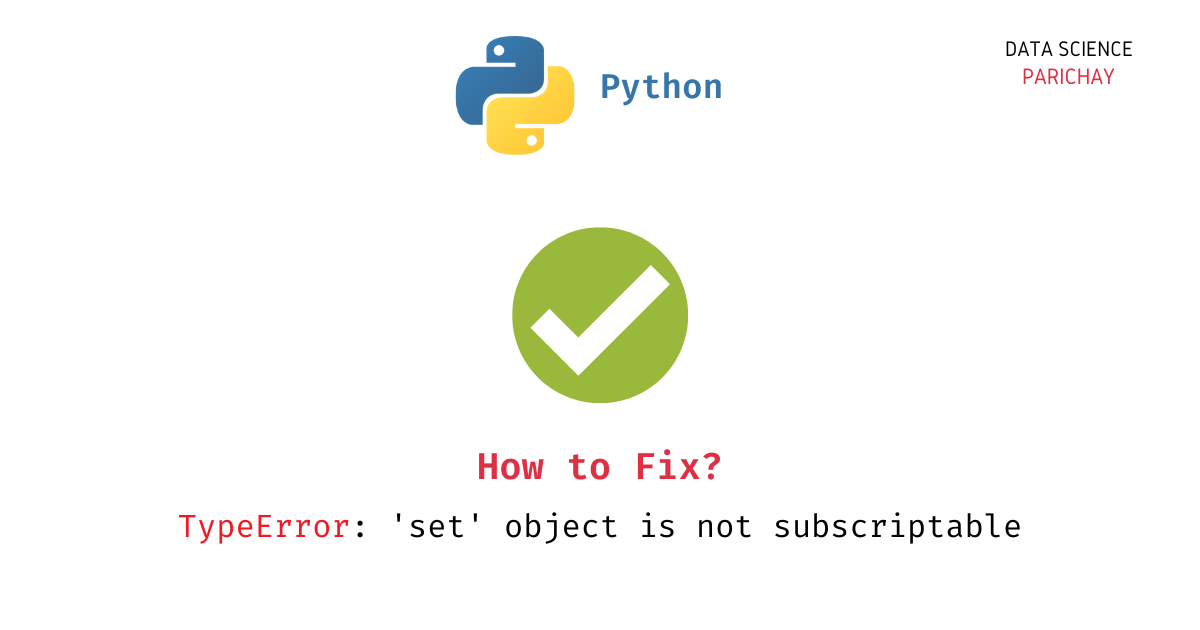


![Solved] TypeError: 'int' Object Is Not Subscriptable in Python | LaptrinhX Solved] Typeerror: 'Int' Object Is Not Subscriptable In Python | Laptrinhx](https://blog.finxter.com/wp-content/uploads/2021/03/typeError.png)




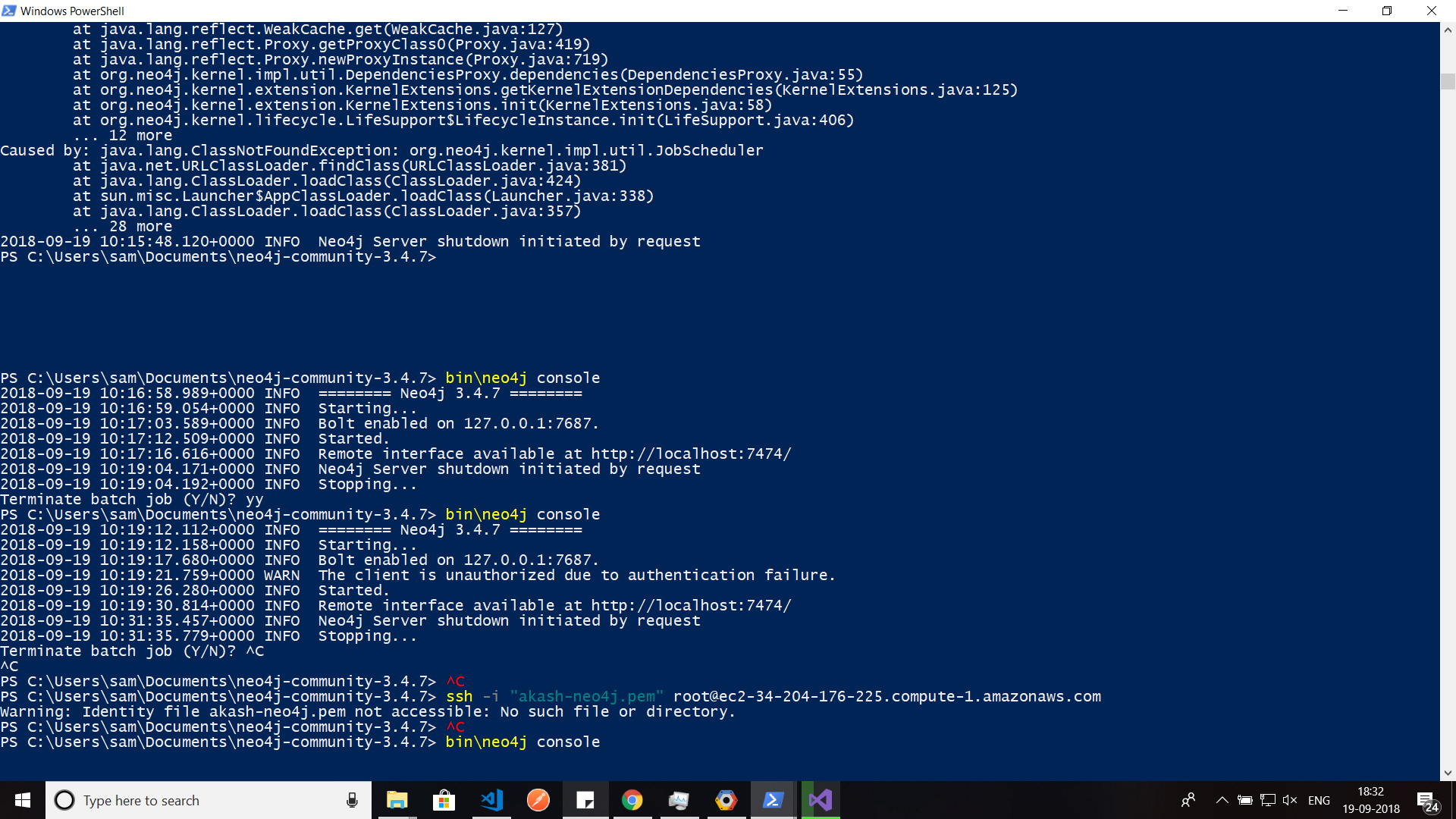
![Typeerror: set object is not subscriptable [SOLVED] Typeerror: Set Object Is Not Subscriptable [Solved]](https://itsourcecode.com/wp-content/uploads/2023/04/Typeerror-set-object-is-not-subscriptable.png)
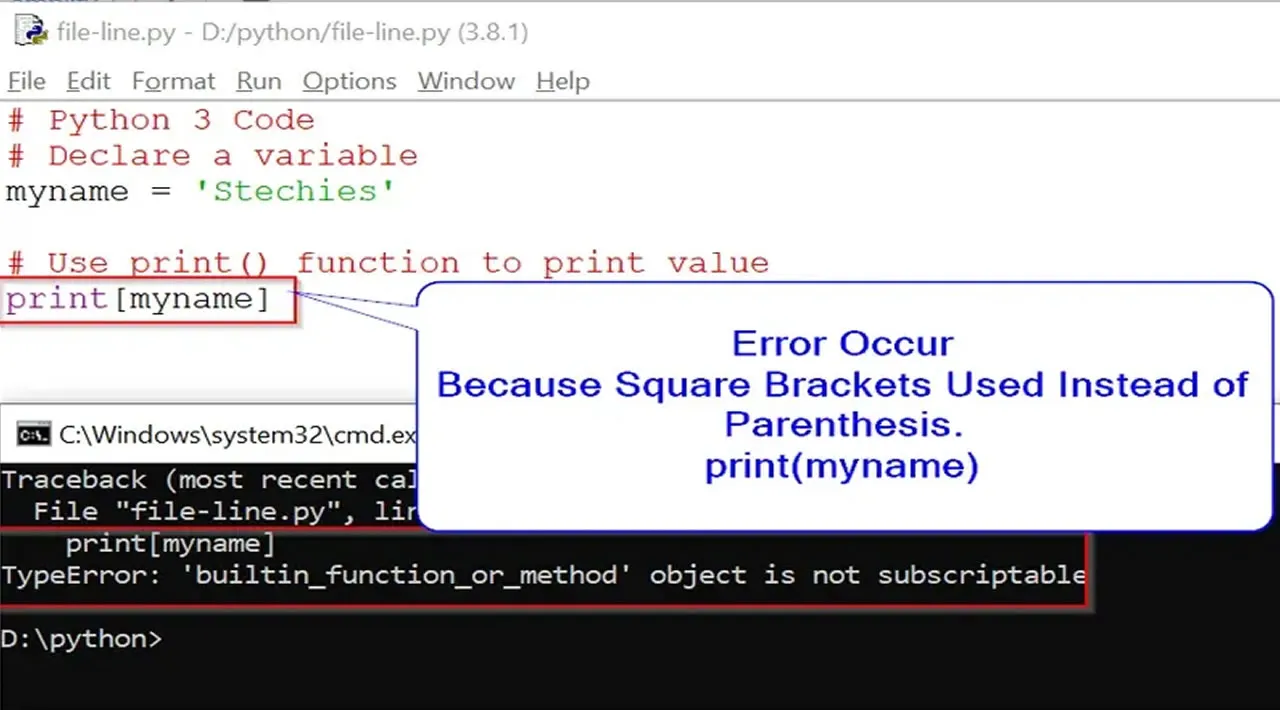







![typeerror: 'set' object is not callable [SOLVED] Typeerror: 'Set' Object Is Not Callable [Solved]](https://itsourcecode.com/wp-content/uploads/2023/03/typeerror-set-object-is-not-callable.png)
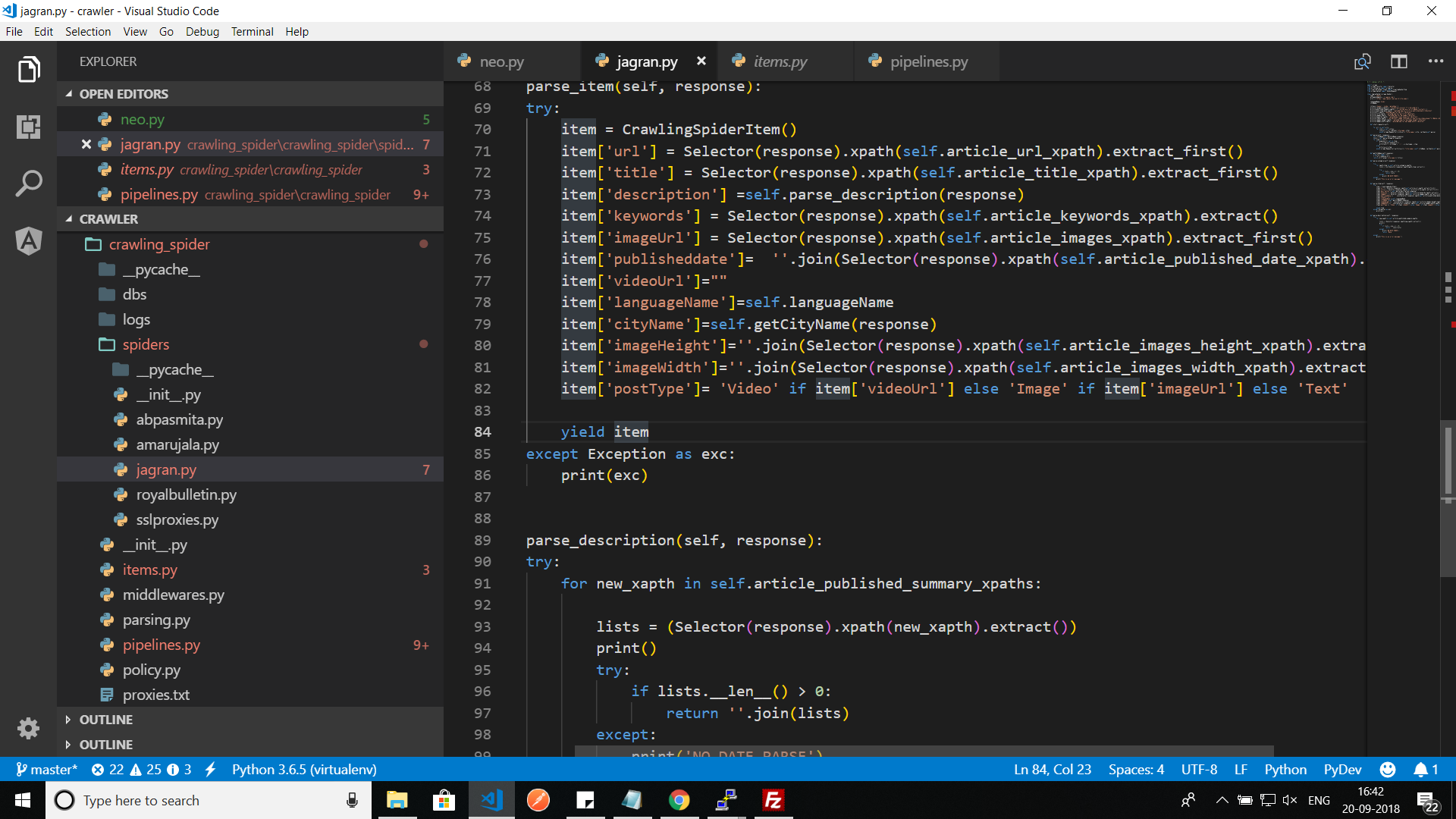
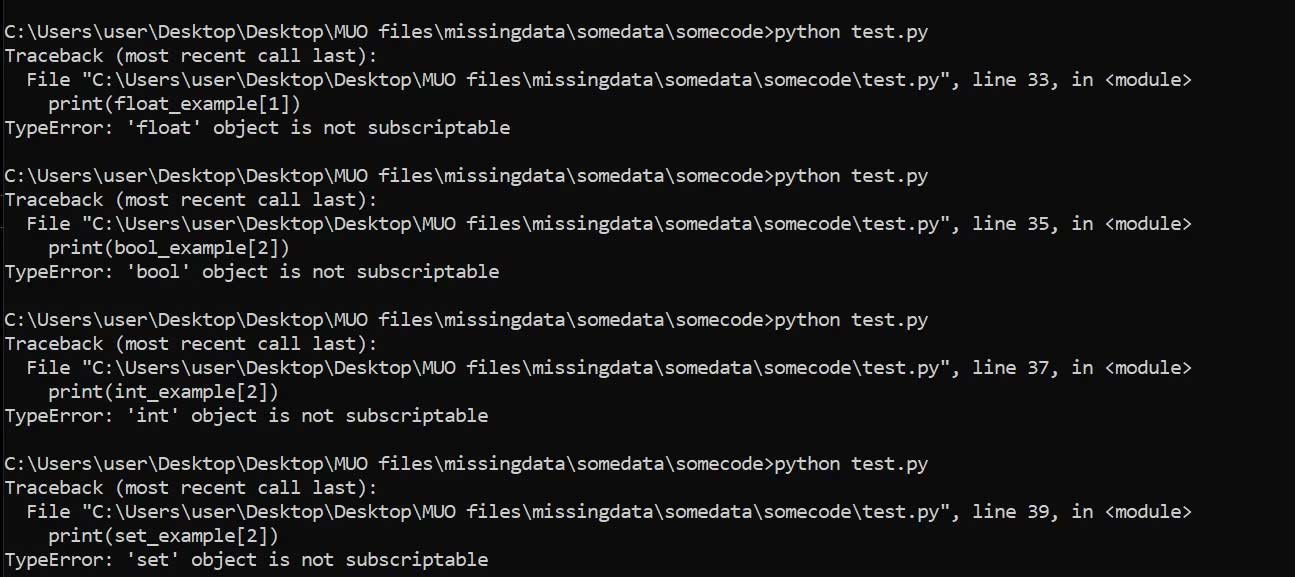


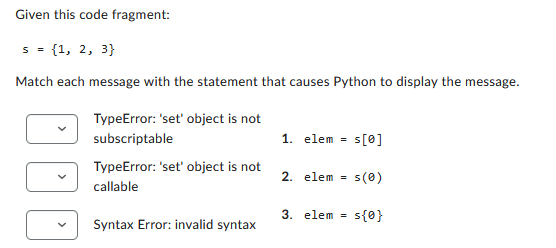

![TypeError: builtin_function_or_method object is not subscriptable Python Error [SOLVED] Typeerror: Builtin_Function_Or_Method Object Is Not Subscriptable Python Error [Solved]](https://www.freecodecamp.org/news/content/images/2022/11/built_in_not_subable.png)
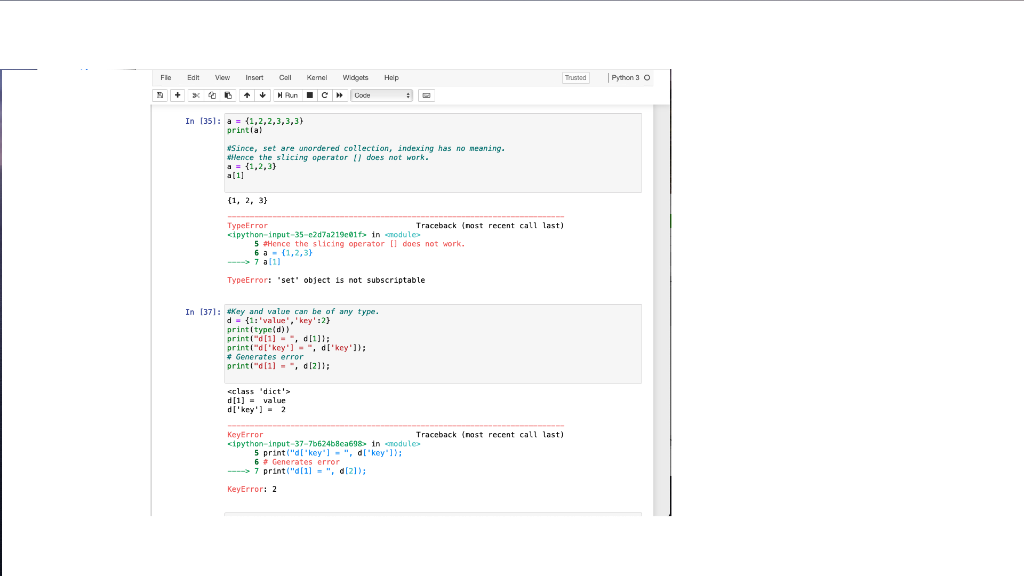

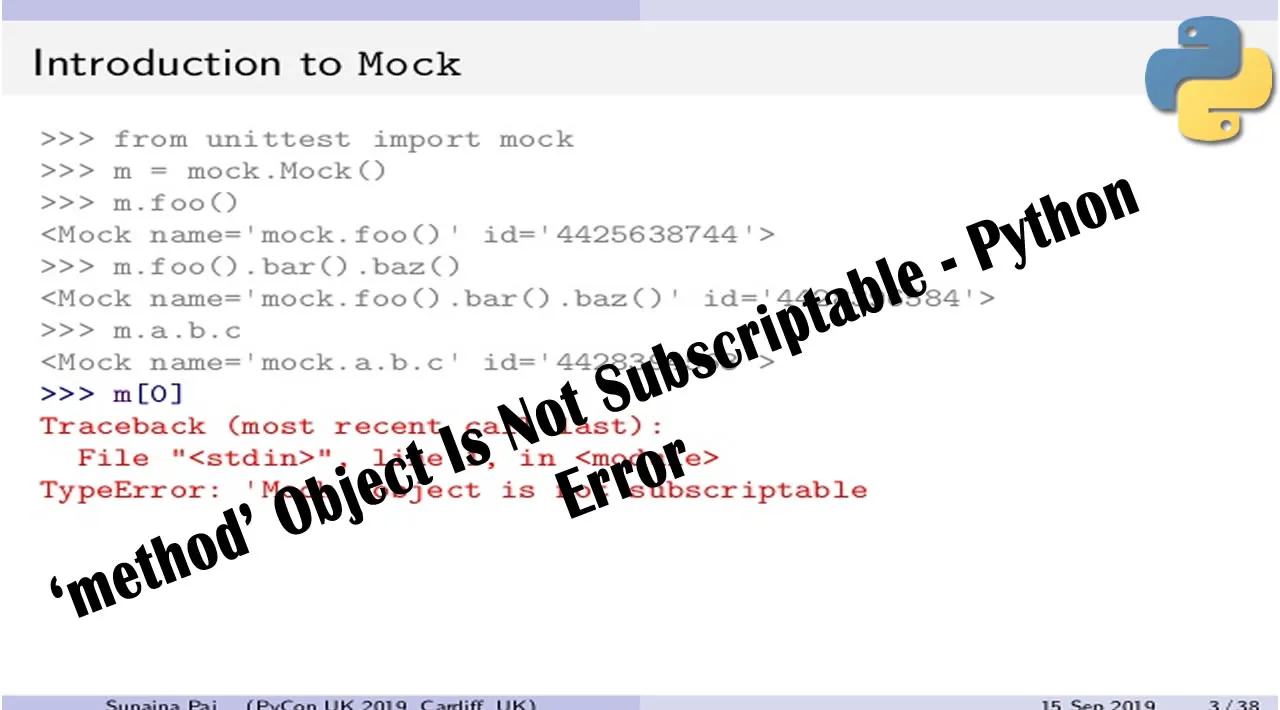


.webp)







![TypeError: 'int' object is not subscriptable [Solved Python Error] Typeerror: 'Int' Object Is Not Subscriptable [Solved Python Error]](https://www.freecodecamp.org/news/content/images/2023/01/kolade-recent.jpg)
_how-to-fix-type-error-type-object-is-not-subscriptable.jpg)

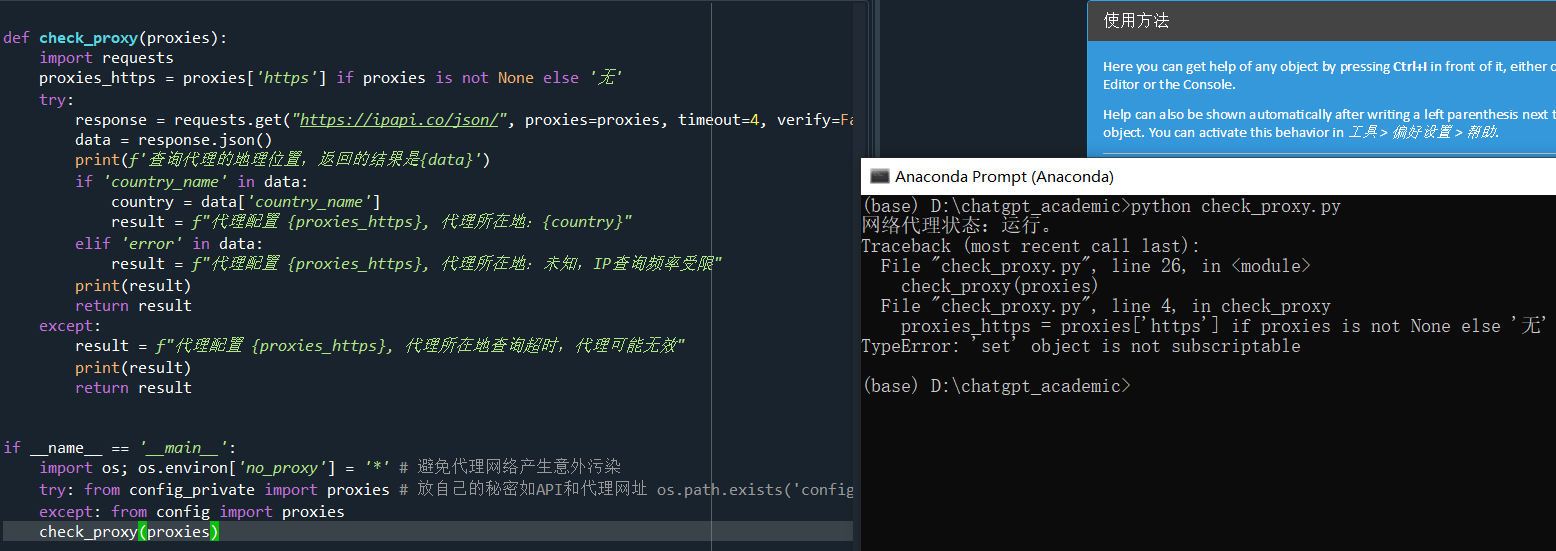

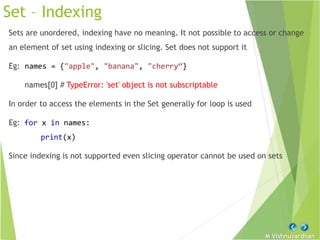

.webp)
Article link: set object is not subscriptable.
Learn more about the topic set object is not subscriptable.
- TypeError: ‘set’ object is not subscriptable in Python | bobbyhadz
- Python TypeError: ‘set’ object is not subscriptable
- Fix Python TypeError: ‘set’ object is not subscriptable
- TypeError: ‘int’ object is not subscriptable [Solved Python Error]
- Tuple Object Does Not Support Item Assignment: How To Solve?
- What does it mean if a Python object is “subscriptable” or not?
- Python TypeError ‘set’ object is not subscriptable – Finxter
- TypeError : ‘set’ object is not subscriptable in Python ( Solved )
- How to Fix – TypeError ‘set’ object is not subscriptable
- How to solve TypeError: ‘set’ object is not subscriptable
- object is not subscriptable” Error in Python – MakeUseOf
- TypeError: ‘int’ object is not subscriptable [Solved Python Error]
See more: https://nhanvietluanvan.com/luat-hoc/